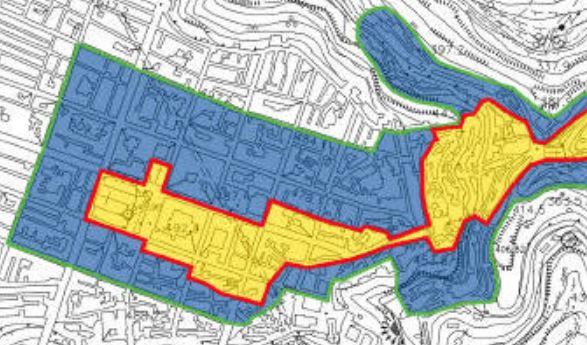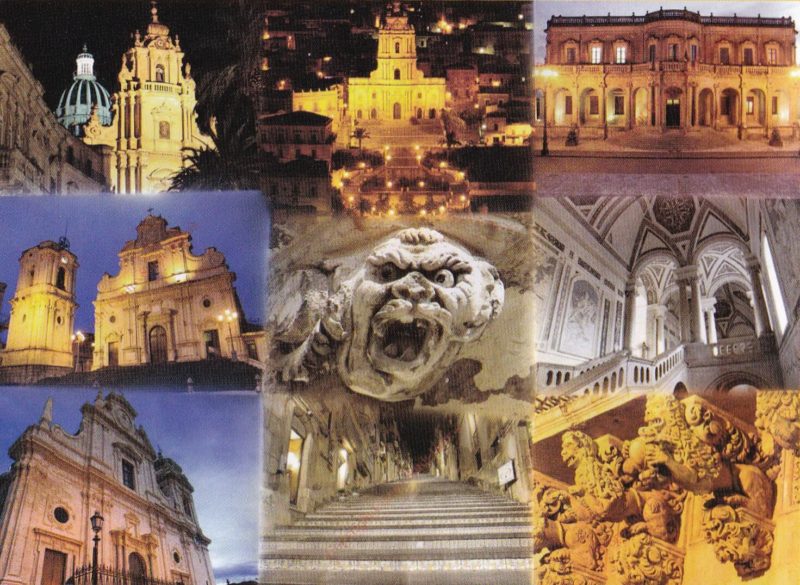Ragusa and the "18 Monuments recognized by UNESCO": Ignorance, indolence or willfulness?
by Ignazio Caloggero

I wonder if those who, even today, insist that Ragusa has "18 monuments recognized by UNESCO" do so out of ignorance, indolence or willful misconduct? Of course to say that Ragusa has 18 monuments recognized by UNESCO is certainly “cooler” than to say Ragusa is included in a UNESCO site (The Late Baroque Towns of Val di Noto) but is it correct to say this? above all, is it correct that the phrase “The 18 monuments recognized by UNESCO” appears on the institutional site of the municipality ?. But entering into the merits, how many UNESCO monuments in Ragusa are actually, 16, 17, 18 or none? Does it make sense to talk about 18 monuments included in the World Heritage List ?. After more than 16 years of looking in vain for someone to give me an answer, in an attempt to clarify I propose again, for the umpteenth time, a technical sheet written many years ago, with the hope of clarifying, once and for all, what I believe was an initial and never corrected error. I hope that before my earthly life ends, that someone with a minimum of competence and honest intellectual deigns to answer me. Providing the right information is the basis for a good and correct promotion of one's territory.
The Late Baroque Towns of the Val di Noto
We often speak of a list of monuments included in the World Heritage List (“WHL”). In my humble opinion, it is good not to confuse the "site" as a whole included in the "WHL", the individual areas actually recognized by Unesco and individual monuments testifying to the Baroque of Val di Noto located within the areas (core zone) entered in the WHL.
As regards the Unesco site in question, for each municipality some areas of excellence (core zone) are identified for a total of 113 hectares which constitute the real Unesco site included in the World Heritage Site and buffer zones, (buffer zone ) for a total of 306 hectares. In these cases the term "serial site" (or multi site) is often used. In some cases the "core zone" is effectively limited to monuments (Modica, Palazzolo Acreide and Militello in Val di Catania) in other cases it delimits entire urban areas. In my opinion only when the area (core zone) recognized by UNESCO corresponds to delimited monuments (See Villa Romana del casale, Arab-Norman Palermo and the Cathedrals of Cefalù and Monreale, The Medici Villas and other similar sites) we should speak of "monuments included in the WHL", in all other cases perhaps it would be better to avoid this term.
To better understand the difference between UNESCO site and monument, we will briefly analyze the following four documents:
1) The Unesco document No. 1024, that in the descriptive part of the single municipalities indicates, at times, the most significant Baroque monuments;
2) List of monuments on the World Heritage list reported in the book by Prof. Lucia Trigilia [THE VALLEY OF THE BAROCCO - The Sicilian cities of the Val di Noto "World Heritage Site" ] (pages 297-303). Prof. Trigilia, together with the International Center for Baroque Studies, conducted the research that formed the scientific basis for the late Baroque heritage of the Val di Noto for the drafting of the Management Plan.
3) The Management Plan (Appendix B) which presents the cataloging forms of the main monuments of the individual municipalities, proposing for some of these, their inclusion in the World Heritage List (WHL). In reality, as we have clarified, it is the “site” as a whole identified by the protected areas (core zone) that is included in the WHL and not the individual monuments falling within these areas.
4) The Unesco document maps1024rev containing maps of all areas recognized by Unesco (core zone) and protected protection areas (buffer zone)
***
1. The UNESCO document N ° 1024
The UNESCO document n ° 1024 does not mention any monument in particular, in the part concerning the description of Ragusa the following is reported: “RAGUSA, the ancient Ibla, is built over three hills separated by a deep valley. It, too, consists of two centers, one rebuilt on the old medieval layout and the other, Upper (present-day) Ragusa, newly built after 1693. It contains nine major churches and seven major palaces, all Baroque. Upper Ragusa has been adversely affected by inappropriate modern development and the town overall is adversely affected by the proximity of chemical, industrial, and mining activities. " The Unesco document indirectly mentions 16 monuments and not 18. Therefore, in addition to not being an indication of the name of the monuments, the number (16) would not correspond to those that it is customary to consider included in the WHL (18)
2. List of monuments on the World Heritage List reported in the book by Prof. Lucia Trigilia
[THE VALLEY OF THE BAROQUE - The Sicilian cities of the Val di Noto "World Heritage Site" ] (pages 297-303). The list of "monuments included in the World Heritage list" reported by the Trigilia coincides, at least in number and type (9 churches and 7 palaces), with what is indicated in the Unesco document:
- Cathedral of St. John the Baptist *
- Church of S. Giorgio *
- Church of S. Maria dei Miracoli *
- Church of S. Giuseppe *
- Church of SS. Souls in Purgatory *
- Church of S. Filippo Neri *
- Church of Idria *
- Church and Convent of S. Francesco Immacolata *
- Church and Convent of S. Maria del Gesù *
- Zacco Palace *
- Sortino-Throne Palace *
- Chancellery Palace *
- Cosentini Palace *
- Battaglia Palace *
- Floridia Palace (Bertini) *
- La Rocca Palace *
Also in this case we can see how the number 16 of the Trigilia list does not coincide with the 18 monuments often indicated in some documents and some sites, including institutional sites.
3. The Management Plan
The Management Plan, in addition to showing the 16 monuments indicated in the previous point, also includes the following:
- Bishop's Palace *
- Church of S. Maria delle Scale *
The latter, to be honest, although renovated after the earthquake of 1693, is best known for its Gothic-Catalan style. In this case, what is stated that there are 18 monuments of Ragusa included in the World Heritage, it was probably wanted to refer to the Management Plan. But if this were the case, the Plan should also be taken as a reference for the other municipalities, referring for details to Management Plan, we can note that in Modica the Management Plan also proposes the Chiesa del Carmine (which presents, among other things, evident traces of the Gothic style, as well as the Church of Santa Maria dell Scale di Ragusa) and which is not considered included in the WHL is included within the officially recognized Core Zone. Note: The symbol * indicates the monuments that have been indicated in the Management Plan for inclusion in the heritage list
4. Maps with the areas actually recognized (maps1024rev)
The UNESCO document maps1024rev containing maps of all areas recognized by UNESCO (core zone) and protected protection areas (buffer zone). By carefully looking at the map of Ragusa containing the area recognized as a "core zone" by UNESCO, it will be discovered that the Bishop's Palace does not fall within the Core Zone but in the "buffer zone". So only 17 of the 18 monuments considered "UNESCO Monuments" in the area actually recognized and included in the WHL. 
Core Zone and Buffer Zone Ragusa

Particular
link: Interactive map UNESCO Area Ragusa
Considerations
Regarding the city of Caltagirone, unfortunately it was not possible to make a comparison with the cards of the monuments contained in the Management Plan, as in the version of the Management Plan we have received, we noticed a huge error: The Caltagirone property cards, they are the same as the monuments of Catania. I was able to analyze The Management Plan, always with the same errors, as well as from a CD circulating since 2002 also in some institutional sites. (I do not exclude that in an indirect way it was also my fault as having already put the contents of these CDs on some of my sites in 2004, it is probable that others have taken the information from these),
Deepening
To learn more about the topic, you can view the following documents:
- The Management Plan: (The analyzed Management Plan is made available and comes from a CD circulating among professionals since 2002, The Plan found has some errors (in particular in appendix "b" the cards of the monuments of Caltagirone are actually those of the Municipality of Catania)
- APPENDIX B of the Management Plan (file in .pdf format 943 kB) - Municipal Property Cataloging Sheets
- ICOMOS Document N ° 1024rev (in English and French. File in .pdf format: 98 Kb)
- ICOMOS document N ° maps1024rev (maps of areas recognized by Unesco)
- THE MANAGEMENT PLAN OPERATIONAL START OF THE MANAGEMENT PLAN OF THE UNESCO SITE: THE LATE BAROQUE CITIES OF THE VAL DI NOTO
Social Blogs: The Blog that everyone can participate in to tell about Sicily. Become the author of the La Sicilia in Rete platform



